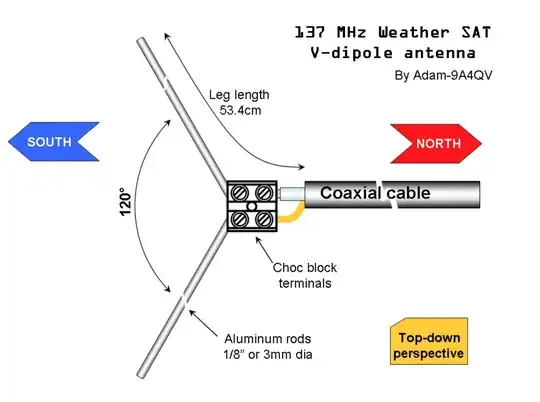I'm attempting to follow this white paper in order to build an antenna. This is my first antenna and as such I have a rather simple question.
DIY 137 MHz APT Weather satellite antenna by Adam-9A4QV
https://www.youtube.com/watch?v=9WNmhfpWxdk
Should one of these legs go to ground and the other to signal from the coaxial cable? It's unclear to me from the diagram:
Whether or not the terminal block is conductive through the center horizontal plane. IE is the top and bottom legs of the antenna separated and thus one goes to signal and one to ground or are they connected in which case they both are connected to both (which I admit makes no sense)?
